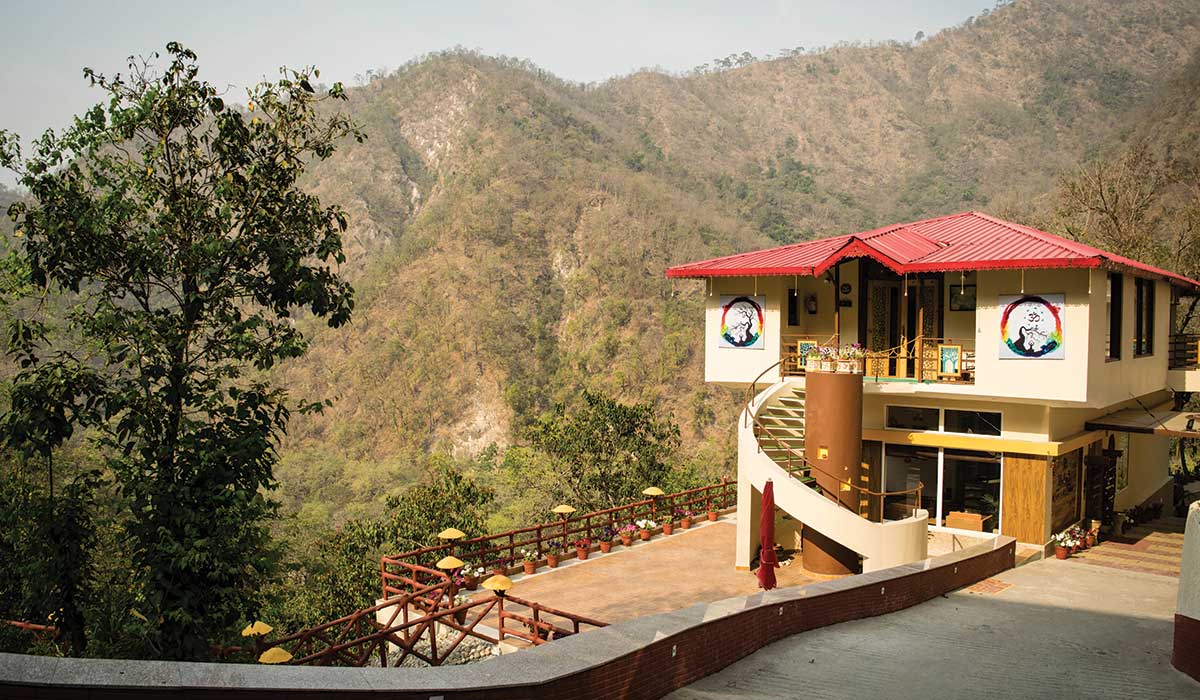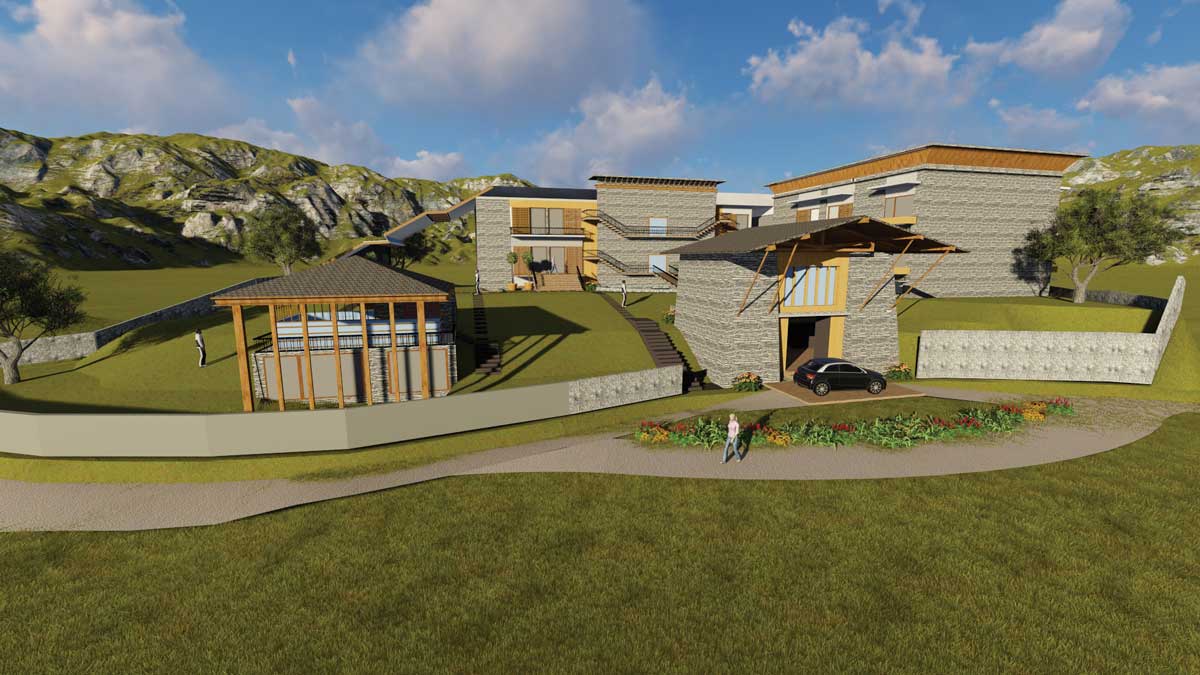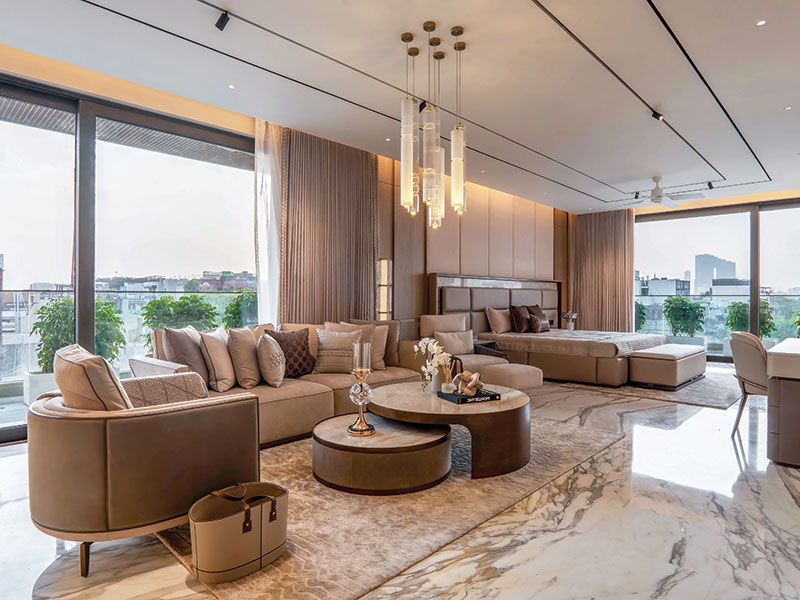Manuj Agarwal, Principal Architect, Manuj Agarwal Architects
As architects, we have to first understand the kind of spaces that would be required, and which would physically and mentally correspond to our needs. For instance, during the pandemic, our collective experience of staying indoors for months on end influenced how architecture would adapt and change to accommodate the new normal. Post-pandemic, many chose to continue to work from home, so, there were many family members at home at the same time. Internal spaces therefore evolved to bring a sense of privacy for each family member’s particular needs, while maintaining a sense of connection between the various spaces. Flexible building design, which is a pretty old but neglected concept, came to the surface. Adjustable interior elements like walls, screens, furniture, etc. came to be used to create a hybrid home cum workspace, while in offices, physically distanced workstations, open floor plans etc became the norm.
Newer Urban Design solutions are also being considered. These include pedestrian-friendly streets, more outdoor social spaces like parks and playgrounds, which create a certain social street culture and give a specific character to the locality. Awareness about adaptive reuse of spaces increased when stadiums, cinema halls, convention centres, etc. were converted into Covid-19 isolation centres. We learnt that transforming certain spaces in some ways can fulfil our purposes as well as save a large number of resources. However, we cannot term these changes as positive/negative or good/bad as they were necessary steps that had to be taken to deal with the pandemic situation.

As architects, designers, and artists, it is our collective responsibility to adapt to the ever-changing needs and wants of people and come up with sustainable design solutions which correspond to the ongoing scenario. We may encounter an issue like this on an even larger scale in the near future. But, as long as we are open to exploring newer design possibilities, there would be no harm to the overall physical and socio-economic structure of the area of concern. Evolving is the only way.
In the constructed environment, quality is not an absolute truth that can be predicted. It derives its meaning from the context and is hence new each time. Our built environment has to meet the needs of people and society, offer a good living environment, and contribute to sustainable development. How we live our lives affects the environment in many ways, whether it is the way we heat our homes, travel to work, or our choice of leisure activities. This involves an observation, analysis, and an understanding of the connection between three aspects: how people think, feel, and act. This enables us to envision better, more holistic solutions in the buildings we design. Ultimately, we want to design spaces that facilitate interconnectivity between people, place, and activity.
To enhance the built quality is to make the structure or space socially efficient. Creating a sense of resilience between different user groups is the main goal of socially defined architecture. Social architecture, which responds to people’s needs, has long been a source of debate in the architectural community due to its importance in narrowing the gap between the haves and have-nots. Debates have increasingly focused on the discipline’s contribution to current societal issues, creating a social impact, neighbourhood improvements, and prospects for social inclusion and cohesiveness.
Social responsibility and environmental responsibility go hand in hand. According to the World Green Building Council’s Global Status Report, the built environment accounts for more emissions than the transport industry. So, as architects, we should do all we can to reduce emissions and counter the effects of climate change. We must incorporate energy-efficient systems and use sustainable or renewable building materials.
Our built environment must meet the needs of people and society by offering a good living environment. This involves a close understanding of the connection between how people think, feel, and act. It will enable us to envision better, more holistic solutions in the buildings we design; ultimately, we want to design spaces that facilitate interconnectivity between people, place, and activity.
Ar. Manuj Agarwal
One of the approaches being investigated to lessen the negative environmental effect is the natural or green building which employs more natural and traditional construction materials rather than the more energy-intensive materials like steel and concrete. Natural materials include straw bales, rammed earth, bamboo, dry stone, and hemp, etc. These are materials that are more readily accessible in nature, take less energy to mass produce, and cause less environmental impact.
Wood is still one of the most often used building materials. However, for natural building, the wood should be renewable and harvested in a sustainable manner. Wood is used for frames, trims, and flooring. Bamboo grows rapidly and is very strong; it is being used in a variety of building projects. Concrete is used in place of rebar, and straw bale pins are also being used. In our project, Gita Foundation Academy, we have used locally available natural materials and its design concept facilitates social interaction between different communities.
Design experts are continuing to uncover the benefits of green building solutions like plastic composites for their durability, light weight, corrosion resistance, high strength, and minimal maintenance needs, in both new construction projects and for rehabilitation work. Plastic composites can be manufactured to meet certain performance qualities as they have a lot of adaptability. Often known as fibre-reinforced plastics or fibre-reinforced polymers (FRP), they are made up of two parts: a reinforcing fibre and a polymer binder.
Agricultural and wood fibres have also sparked attention, particularly in the housing industry. Natural fibres can be utilised with phenolics, polyester, polystyrene, polyurethane, and other polymer matrixes, however, PVC and polypropylene are the most common polymers used with natural-fibre composites. Natural fibres originating from the bast (outer stem) of some plants like wheat-straw fibre, flax, jute, kenaf, sisal, hemp, and coconut, are now embedded in a polyester or polypropylene matrix to make several plastic composite construction materials. Natural fibres are normally not employed in high-performance applications due to their moderate mechanical properties, but their low specific weight results in relatively high specific strength and stiffness, which is generally a plus for parts built for bending stiffness.

Bacteria resistant materials are generally used in interior surfaces of hospitals, offices, classrooms, conference halls, seminar halls, and other indoor gathering spaces. Microscopic organisms will find any uneven surface to latch onto. Ceramic steel is a bacteria resistant material, meaning that the surface is fully inorganic and cannot be broken down by germs and used as a food source. This makes it simple to remove germs from whiteboard and chalkboard surfaces that have been transmitted to them via the air or through touch. Some whiteboard surfaces like paint, melamine and laminates are less durable, unable to withstand the use of harsh cleaners. The top layer that makes them a dry erase surface will wear away and render them unusable over time. However, ceramic steel surfaces can tolerate frequent cleaning, even with abrasive or strong disinfectants.
Building materials should be chosen with respect to their local availability, the building’s need for stability, and according to its typology. As of now, conventional building materials seem to be trending in most of the modern structures. Though use of natural and sustainable materials is being encouraged, it is not being implemented on a huge scale. To reach a stage where most of the mainstream buildings are built using natural materials will take time. Also, hybrid structures having both conventional and sustainable materials are being built all over the globe.
















